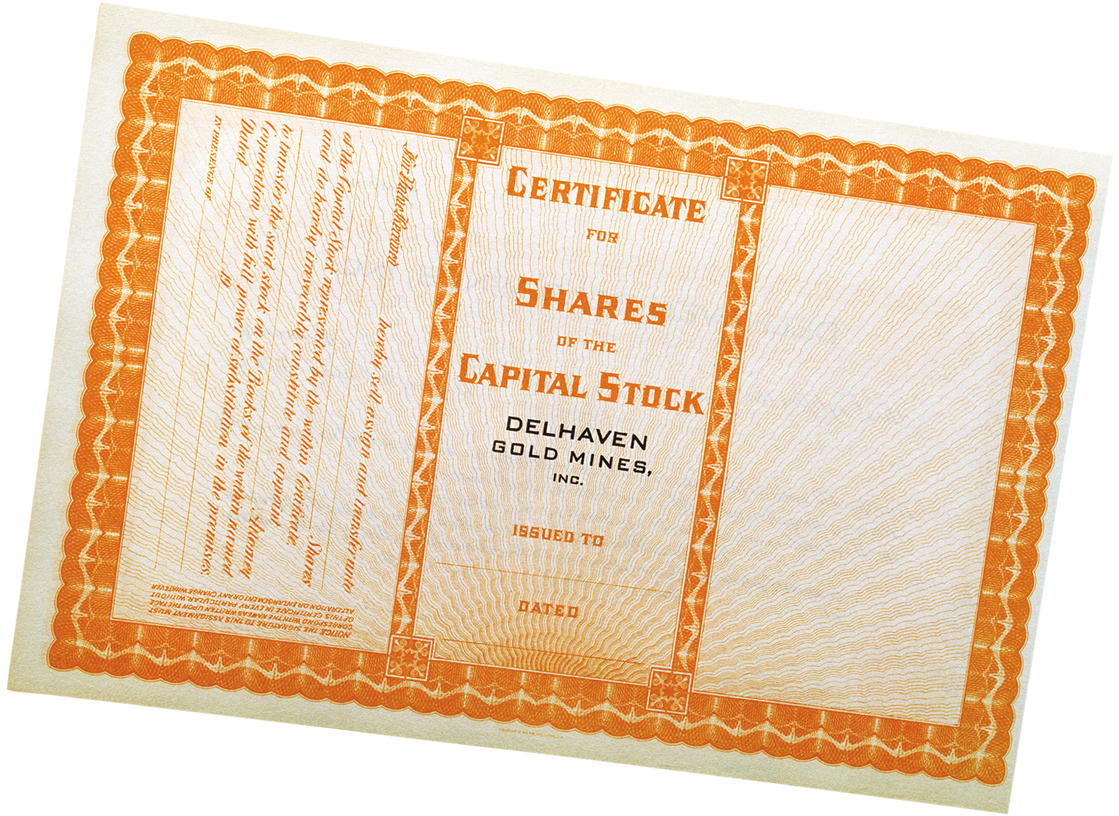The Financial System
AP® Exam Tip
When other nations buy financial assets from the United States, there is a capital inflow. When Americans buy financial assets in other countries, there is a capital outflow.
A household’s wealth is the value of its accumulated savings.
A financial asset is a paper claim that entitles the buyer to future income from the seller.
A physical asset is a claim on a tangible object that gives the owner the right to dispose of the object as he or she wishes.
A liability is a requirement to pay money in the future.
Financial markets are where households invest their current savings and their accumulated savings, or wealth, by purchasing financial assets.
A financial asset is a paper claim that entitles the buyer to future income from the seller. For example, when a saver lends funds to a company, the loan is a financial asset sold by the company that entitles the lender (the buyer) to future income from the company. A household can also invest its current savings or wealth by purchasing a physical asset, a claim on a tangible object, such as a preexisting house or a preexisting piece of equipment. It gives the owner the right to dispose of the object as he or she wishes (for example, rent it or sell it).
If you were to go to your local bank and get a loan—
These four types of financial assets exist because the economy has developed a set of specialized markets, such as the stock market and the bond market, and specialized institutions, such as banks, that facilitate the flow of funds from lenders to borrowers. A well-
Three Tasks of a Financial System
There are three important problems facing borrowers and lenders: transaction costs, financial risk, and the desire for liquidity. The three tasks of a financial system are to reduce these problems in a cost-
Transaction costs are the expenses of negotiating and executing a deal.
Reducing Transaction Costs Transaction costs are the expenses of actually putting together and executing a deal. For example, arranging a loan requires spending time and money negotiating the terms of the deal, verifying the borrower’s ability to pay, drawing up and executing legal documents, and so on. Suppose a large business decided that it wanted to raise $1 billion for investment spending. No individual would be willing to lend that much. And negotiating individual loans from thousands of different people, each willing to lend a modest amount, would impose very large total costs because each individual transaction would incur a cost. Total costs would be so large that the entire deal would probably be unprofitable for the business.
Fortunately, that’s not necessary: when large businesses want to borrow money, they either get a loan from a bank or sell bonds in the bond market. Obtaining a loan from a bank avoids large transaction costs because it involves only a single borrower and a single lender. We’ll explain more about how bonds work in the next section. For now, it is enough to know that the principal reason there is a bond market is that it allows companies to borrow large sums of money without incurring large transaction costs.
Financial risk is uncertainty about future outcomes that involve financial losses and gains.
Reducing Risk A second problem that real-
Most people are risk-
An individual can engage in diversification by investing in several different assets with unrelated risks.
By selling a share of her business, the owner has been able to invest in several things in a way that lowers her total risk. She has maintained her investment in her bank account, a financial asset; in ownership of her house, a physical asset; and in ownership of the unsold portion of her business, also a physical asset. By engaging in diversification—investing in several assets with unrelated, or independent, risks—

Providing Liquidity The third and final task of the financial system is to provide investors with liquidity, which—
An asset is liquid if it can be quickly converted into cash without much loss of value.
An asset is illiquid if it cannot be quickly converted into cash without much loss of value.
An asset is liquid if, as with money deposited in a bank, it can be quickly converted into cash without much loss of value. An asset is illiquid if, as with a business, car, or home, it cannot. The reluctance to invest heavily in illiquid assets would deter business growth and many major purchases if financial systems offered no remedy. As we’ll see, however, the initial sale of stocks and bonds can resolve some liquidity problems by raising money for new and expanding projects. And, by taking deposits and lending them out, banks allow individuals to own liquid assets (their deposits) while financing investments in illiquid assets such as businesses and homes.
To help lenders and borrowers make mutually beneficial deals, then, the economy needs ways to reduce transaction costs, to reduce and manage risk through diversification, and to provide liquidity. How does it achieve these tasks? With a variety of financial assets.
Types of Financial Assets
In the modern economy there are four main types of financial assets: loans, bonds, stocks, and bank deposits. In addition, financial innovation has allowed the creation of a wide range of loan-
A loan is a lending agreement between an individual lender and an individual borrower.
Loans A loan is a lending agreement between an individual lender and an individual borrower. Most people encounter loans in the form of bank loans to finance the purchase of a car or a house. And small businesses usually use bank loans to buy new equipment.
The good aspect of loans is that a given loan is usually tailored to the needs of the borrower. Before a small business can get a loan, it usually has to discuss its business plans, its profits, and so on with the lender. This results in a loan that meets the borrower’s needs and ability to repay.
The bad aspect of loans is that making a loan to an individual person or a business typically involves a lot of transaction costs, such as the cost of negotiating the terms of the loan, investigating the borrower’s credit history and ability to repay, and so on. To minimize these costs, large borrowers such as major corporations and governments often take a more streamlined approach: they sell (or issue) bonds.

Bonds A bond is an IOU issued by the borrower. Normally, the seller of the bond promises to pay a fixed sum of interest each year and to repay the principal—
A default occurs when a borrower fails to make payments as specified by the loan or bond contract.
Bond purchasers can acquire information free of charge on the quality of the bond issuer, such as the bond issuer’s credit history, from bond-
Another important advantage of bonds is that they are easy to resell. This provides liquidity to bond purchasers. Indeed, a bond will often pass through many hands before it finally comes due. Loans, in contrast, are much more difficult to resell because, unlike bonds, they are not standardized: they differ in size, quality, terms, and so on. This makes them a lot less liquid than bonds.
A loan-
AP® Exam Tip
It is worthwhile to understand the categories of assets so you can understand their use in different macroeconomic models.
Loan-
Stocks A stock is a share in the ownership of a company. A share of stock is a financial asset from its owner’s point of view and a liability from the company’s point of view. Not all companies sell shares of their stock; “privately held” companies are owned by an individual or a few partners, who get to keep all of the company’s profit. Most large companies, however, do sell stock. For example, as this book goes to press, Microsoft has more than 8 billion shares outstanding; if you buy one of those shares, you are entitled to about one-

Why does Microsoft, historically a very profitable company, allow you to buy a share in its ownership? Why don’t Bill Gates and Paul Allen, the two founders of Microsoft, keep complete ownership for themselves and just sell bonds for their investment spending needs? The reason, as we have just learned, is risk: few individuals are risk-
Reducing the risk that business owners face, however, is not the only way in which the existence of stocks improves society’s welfare: it also improves the welfare of investors who buy stocks (that is, shareowners, or shareholders). Shareowners are able to enjoy the higher returns over time that stocks generally offer in comparison to bonds. Over the past century, the average annual return on U.S. stocks has been about 7% after adjusting for inflation; for U.S. bonds the average annual return during the same time period has been only about 2%. But as investment companies warn you, “Past performance is no guarantee of future performance.” And there is a downside: owning the stock of a given company is riskier than owning a bond issued by the same company. Why? Loosely speaking, a bond is a promise while a stock is a hope: by law, a company must pay what it owes its lenders (bondholders) before it distributes any profit to its shareholders. And if the company should fail (that is, be unable to pay its interest obligations and declare bankruptcy), its physical and financial assets go to its bondholders—
The financial system has devised ways to help investors as well as business owners simultaneously manage risk and enjoy somewhat higher returns. It does that through the services of institutions known as financial intermediaries.
Financial Intermediaries
A financial intermediary is an institution that transforms the funds it gathers from many individuals into financial assets.
A financial intermediary is an institution that transforms funds gathered from many individuals into financial assets. The most important types of financial intermediaries are mutual funds, pension funds, life insurance companies, and banks. About three-
Mutual Funds As we’ve explained, owning shares of a company entails risk in return for a higher potential reward. But it should come as no surprise that stock investors can lower their total risk by engaging in diversification. By owning a diversified portfolio of stocks—

A mutual fund is a financial intermediary that creates a stock portfolio and then resells shares of this portfolio to individual investors.
However, for individuals who don’t have a large amount of money to invest—
The mutual fund industry represents a huge portion of the modern U.S. economy, not just of the U.S. financial system. In total, U.S. mutual funds had assets of $13 trillion at the end of 2012. The largest mutual fund company at the end of 2013 was Vanguard Group, Inc., which managed almost $2.4 trillion in funds.
We should mention, by the way, that mutual funds do charge fees for their services. These fees are quite small for mutual funds that simply hold a diversified portfolio of stocks, without trying to pick winners. But the fees charged by mutual funds that claim to have special expertise in investing your money can be quite high.
A pension fund is a nonprofit institution that invests the savings of members and provides them with income when they retire.
Pension Funds and Life Insurance Companies In addition to mutual funds, many Americans have holdings in pension funds, nonprofit institutions that collect the savings of their members and invest those funds in a wide variety of assets, providing their members with income when they retire. Although pension funds are subject to some special rules and receive special treatment for tax purposes, they function much like mutual funds. They invest in a diverse array of financial assets, allowing their members to achieve more cost-
A life insurance company sells policies that guarantee a payment to a policyholder’s beneficiaries when the policyholder dies.
Americans also have substantial holdings in the policies of life insurance companies, which guarantee a payment to the policyholder’s beneficiaries (typically, the family) when the policyholder dies. By enabling policyholders to cushion their beneficiaries from financial hardship arising from their death, life insurance companies also improve welfare by reducing risk.
Banks Recall the problem of liquidity: other things equal, people want assets that can be readily converted into cash. Bonds and stocks are much more liquid than physical assets or loans, yet the transaction cost of selling bonds or stocks to meet a sudden expense can be large. Furthermore, for many small and moderate-
A bank deposit is a claim on a bank that obliges the bank to give the depositor his or her cash when demanded.
A bank works by first accepting funds from depositors: when you put your money in a bank, you are essentially becoming a lender by lending the bank your money. In return, you receive credit for a bank deposit—a claim on the bank, which is obliged to give you your cash if and when you demand it. So a bank deposit is a financial asset owned by the depositor and a liability of the bank that holds it.
A bank is a financial intermediary that provides liquid assets in the form of bank deposits to lenders and uses those funds to finance borrowers’ investment spending on illiquid assets.
A bank, however, keeps only a fraction of its customers’ deposits in the form of ready cash. Most of its deposits are lent out to businesses, buyers of new homes, and other borrowers. These loans come with a long-
In essence, a bank is engaging in a kind of mismatch: lending for long periods of time but also subject to the condition that its depositors could demand their funds back at any time. How can it manage that?
The bank counts on the fact that, on average, only a small fraction of its depositors will want their cash at the same time. On any given day, some people will make withdrawals and others will make new deposits; these will roughly cancel each other out. So the bank needs to keep only a limited amount of cash on hand to satisfy its depositors. In addition, if a bank becomes financially incapable of paying its depositors, individual bank deposits are currently guaranteed to depositors up to $250,000 by the Federal Deposit Insurance Corporation, or FDIC, a federal agency. This reduces the risk to a depositor of holding a bank deposit, in turn reducing the incentive to withdraw funds if concerns about the financial state of the bank should arise. So, under normal conditions, banks need hold only a fraction of their depositors’ cash.
By reconciling the needs of savers for liquid assets with the needs of borrowers for long-